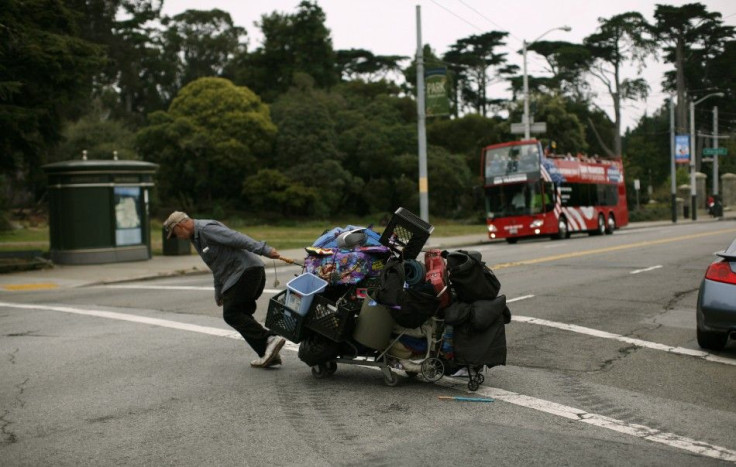U.S. Poverty Rate Rises to 15.1 Percent: Best Solution, Job Growth?
ANALYSIS

Poverty is on the rise -- something one would expect after the worst recession (2007-2009) since the Great Depression -- but the percentage is still stark: 15.1 percent of the nation lives in poverty, in the richest nation on the face of the Earth.
That's up from 14.3 percent in 2009, and it's the third annual increase in the poverty rate -- again, something you'd expect to see, given that a rebound in employment lags the recovery in gross domestic product, the U.S. Census announced Tuesday.
The U.S. government defines poverty as an annual income of $22,314 a year for a family of four; or $11,139 for an individual.
Recession Takes a Toll
Other evidence of economic stress: wages for middle-class families were stagnant in 2010, with median household income dropping slightly from $49,777 to $49,445. Declining income has hit the poorest Americans hardest: The top 10 percent of earners have seen their income decline by a cumulative 1.5 percent since 1999, compared to a drop of 12.1 percent for the bottom 10 percent of earners.
The figures we are releasing today are important, Robert Groves, the director of the U.S. Census Bureau, told The New York Times. They tell us how changing economic conditions have impacted Americans and their families.
A steady increase in prices has outpaced income, which has shown scant growth over the past few years. A middle income family earns only 11 percent more than they did in 1980, while consumer prices have increased about 155 percent.
Higher Percent of Blacks, Hispanics in Poverty
By race, the 2010 poverty statistics were as follows: the poverty rate for Hispanics increased to 26.6 percent from 25.3 percent; and for blacks it rose to 27.4 percent from 25.8 percent; for whites, the poverty rate in 2010 was 9.9 percent, a half percentage point increase from the previous year.
Also, 12.1 percent of Asian Americans fell below the poverty line in 2010, which was a statistically insignificant change from 2009.
Americans Without Health Insurance
One bright spot, and it's a modest one, concerned health insurance: the nation's health insurance problem didn't worsen in 2010, on a statistical basis, the U.S. Census said.
The number of people with health insurance increased to 256.2 million in 2010 from 255.3 million in 2009; however, the percentage of people with health insurance wasn't statistically different from 2009.
Between 2009 and 2010, the percentage of people covered by private health insurance declined from 64.5 percent to 64.0 percent, while the percentage covered by government health insurance increased from 30.6 percent to 31.0 percent. The percentage covered by employment-based health insurance declined from 56.1 percent to 55.3 percent.
The percentage covered by Medicaid, 15.9 percent, was not statistically different from 2009.
In 2010, 9.8 percent of children under 18, 7.3 million, were without health insurance. Neither estimate is significantly different from the corresponding 2009 estimate.
The uninsured rate for children in poverty, 15.4 percent, was greater than the rate for all children, 9.8 percent.
In 2010, the uninsured rates decreased as household income increased: from 26.9 percent for those in households with annual incomes less than $25,000 to 8.0 percent in households with incomes of $75,000 or more.
Political/Public Policy Analysis: Again, on one level, the poverty data isn't a surprise -- the 2007-2009 recession took an enormous toll, and the U.S. is roughly 11 million jobs short. At least part of the poverty increase undoubtedly stems from lower-wages (and in some cases middle-wage) individuals falling in to poverty as a result of a layoff and a poor job market: there are about four people looking for work for every job vacancy.
Further, sociologists and economists say the causes of poverty are many and complex, but one thing they agree on: a robust U.S. economy with strong job growth is one of the best -- if not the best -- antipoverty program the nation can offer. Simply, jobs -- and especially jobs that pay a living wage -- create a new lease on life for many people.
And the above is all-the-more reason both public and private policymakers must concentrate on the nation's No. 1 problem: the job deficit.
© Copyright IBTimes 2025. All rights reserved.





















